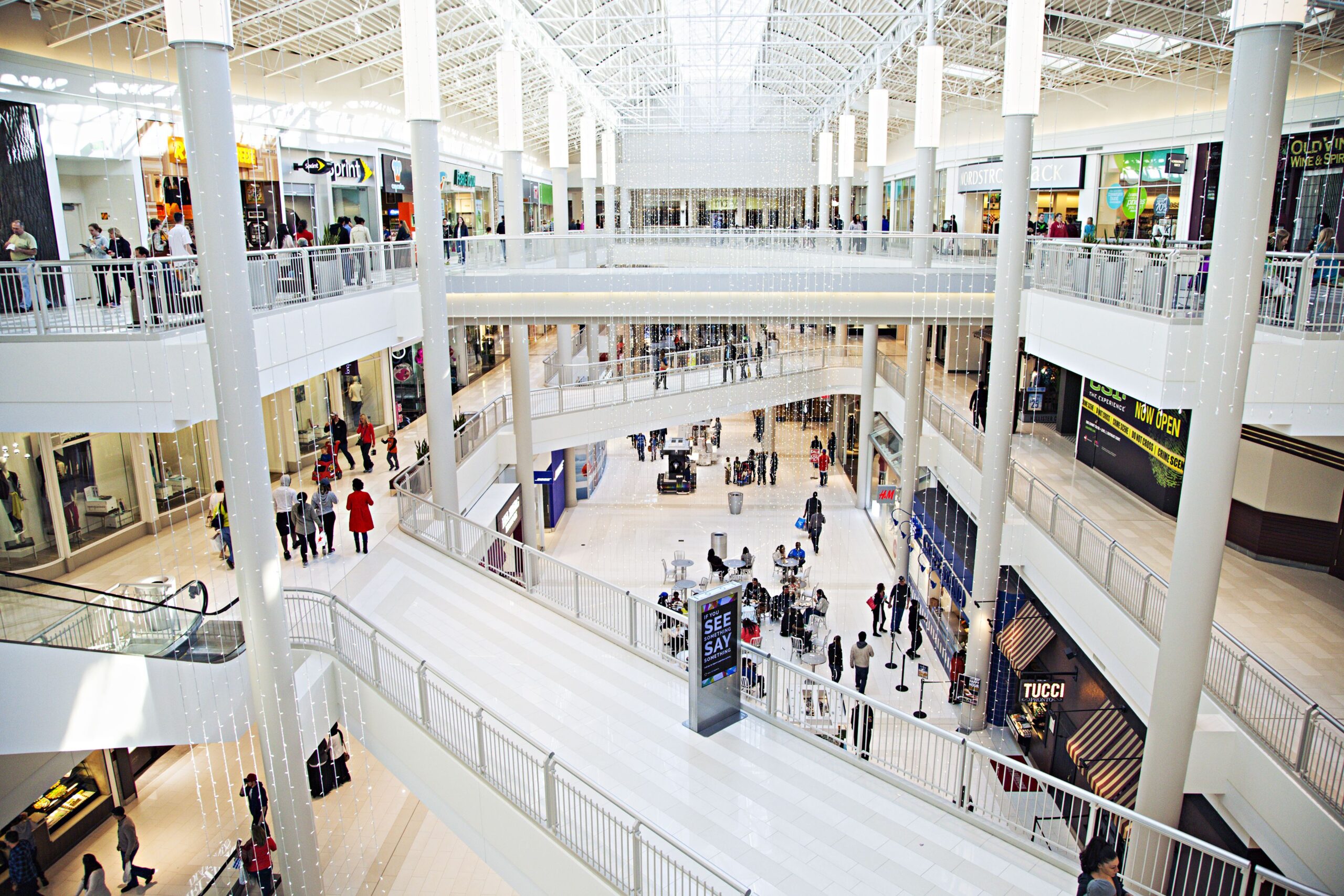Shopping malls were once viewed as relics of the past—casualties of the eCommerce boom and shifting consumer habits. But, against the odds, malls are thriving again. What was once considered outdated is making a strong comeback in communities across the country.
For product manufacturers, this revival is not just a phenomenon worth watching; it’s an opportunity to capitalize on an emerging retail trend. Malls provide a dynamic, tactile space where brands can showcase products and interact with customers in ways online platforms simply can’t replicate.
This blog explores why shopping malls have proven resilient, how they’re evolving, and what these changes mean for your brand.
The Resilience of Physical Retail
The Shift Back to In-Person Shopping
While eCommerce continues to grow, recent data indicates a significant shift back to in-person shopping. The reasons are clear. Many consumers crave the sensory experiences that only physical retail can offer—touching, feeling, and trying products before making a purchase. Additionally, shopping malls are often about more than shopping; they are social hubs where customers can gather, browse, dine, and spend time with family or friends, enhancing their appeal.
A 2023 survey by Placer.ai revealed a 12% increase in foot traffic to U.S. malls compared to pre-pandemic levels. Coupled with this, Deloitte’s retail report showed nearly 50% of consumers prefer a combination of online and offline shopping in their customer journeys.
Experiential Retail Environments
Modern shopping malls are trading traditional retail rows for immersive, experiential hubs. From pop-up shops and interactive displays to Instagram-worthy architectural designs and digital touchpoints, malls strive to deliver experiences that consumers can’t replicate online.
Consider examples like American Dream Mall in New Jersey or The Grove in Los Angeles. These locations have reimagined retail as entertainment. Between indoor ski slopes, live performances, gourmet food courts, and flagship stores with interactive features, these malls blend leisure and commerce seamlessly.
Case Studies of Successful Revivals
- Brookfield Place, NYC: This luxury mall pivoted to focus on customer experience by hosting art exhibitions, culinary showcases, and wellness activities. These events significantly increased foot traffic and consumer engagement.
- NorthPark Center, Dallas: By integrating contemporary art installations throughout its space, NorthPark now attracts more than 26 million visitors annually, cementing its role as both a shopping and cultural destination.
Such examples demonstrate that malls are no longer just about shopping—they’re about creating shared experiences.
How Shopping Malls are Evolving
Enhancing Shopping Experiences with Technology
Today’s malls are packed with smart technology to deliver a better customer experience. Some malls use augmented reality (AR) mirrors, enabling customers to “try on” clothing virtually. Others are implementing mobile apps for seamless parking, navigation, and exclusive offers.
For example, Westfield malls have introduced digital directories, AI-powered chatbots, and loyalty apps focused on streamlining visits while rewarding frequent customers.
Diversifying Tenant Mix
Traditional retail tenants are being complemented with experiential, entertainment, and service-based businesses. This includes fitness centers, modern coworking spaces, wellness spas, and even urban farms. For instance, Minneapolis’s Rosedale Center now features a gaming arcade alongside its typical retailers, catering to younger clientele.
This diversification not only attracts customers with unique interests but also increases dwell time, giving product manufacturers more opportunities to engage shoppers.
Sustainability and Community Engagement
Malls are becoming more eco-friendly to align with consumer priorities. From installing solar panels to developing green rooftops, developers are committing to sustainability. Additionally, many malls actively engage their communities by hosting farmers’ markets, public performances, and environmental awareness campaigns.
These efforts enhance brand image for both the mall and its tenants, creating a more appealing ecosystem for partners like product manufacturers.
Opportunities for Product Manufacturers
Leveraging Malls for Increased Sales
Shopping malls offer an unmatched opportunity for immersive brand experiences. Featuring your products in a physical space allows customers to interact with them directly, increasing the likelihood of purchase. Pop-up stores are increasingly being used by brands to test new markets and generate buzz.
Apple and Tesla stores are prime examples of how product presentation and interactivity in malls can elevate customer excitement and brand visibility. For smaller manufacturers, mall kiosks offer an affordable way to connect directly with consumers.
Partnering with Malls and Retailers
Malls encourage partnerships between brands, retailers, and mall operators to maximize foot traffic. Whether it’s collaborating on mall-wide promotions or sponsoring family-friendly activities, brands have numerous opportunities to boost engagement.
For instance, cosmetic brand Glossier launched a series of experiential pop-up shops at malls nationwide, leading to increased sales and brand loyalty. Similarly, product launches or seasonal promotions held exclusively at malls can drive significant interest and create exclusivity.
Case Studies of Manufacturer Success
- LEGO partnered with select malls to host “build-your-own-creations” workshops. This cross-generational activity not only delighted customers but also led to increased product purchases.
- Dyson set up interactive “demo zones” highlighting their vacuum cleaners and hair tools, providing hands-on product trials that significantly increased conversions.
The Future of Shopping Malls
Malls as Community Anchors
Looking ahead, shopping malls are poised to evolve further into community hubs. Future trends point to more inclusive spaces where retail is paired with coworking areas, medical services, art installations, and entertainment hubs.
Concepts like “retailtainment” and “live, work, play” stations, where malls become all-encompassing mini-cities, are taking hold globally. These will create more expansive opportunities for brands to reach their target audiences.
Emerging Innovations
Some malls are exploring AI-powered personalization for shoppers, offering promotional deals based on real-time shopping habits. Others are launching digital twins—virtual representations of mall layouts—for customers who prefer blending online browsing with in-person pickups.
Virtual and augmented reality integrations will further revolutionize storytelling in retail, elevating how manufacturers showcase products.
Recommendations for Product Manufacturers
To stay competitive, product manufacturers should focus on aligning their strategies with these changes. Consider the following approaches:
- Digital-Physical Integrations: Implement digital touchpoints at stores, like QR codes with product details or AR trials.
- Sustainability Partnerships: Collaborate on eco-focused initiatives with malls that share your brand’s values.
- Pop-up Events: Regularly host interactive events to stand out and drive engagement.
Redefine Success with Shopping Malls
Shopping malls are no longer just retail destinations—they are experience-driven ecosystems designed to connect consumers and brands. For product manufacturers, the comeback of malls represents an exciting avenue to market their products, engage customers, and ignite brand loyalty.
Don’t sit back and watch this momentum pass by. Collaborate with retailers today, explore mall partnerships, and ensure your brand plays a key role in shaping these thriving hubs of commerce and connection.
Have you considered launching your product brand in retail? If so, our team at Retailbound can help. Since 2008, we have helped countless product brands launch and grow in the retail space. Contact us today to get more information.
About the Author
Yohan Jacob is the President and Founder of Retailbound. Retailbound is a comprehensive retail channel management consultancy that helps brands launch and scale their products in over 150+ retailers in both the US and Canada. Specializing in bridging the gap between product creators and retailers, Retailbound offers a range of services from retail strategy development, buyer engagement, sales management and channel marketing support. Whether the client is a startup or an established brand, Retailbound provides expert guidance to increase their retail presence, navigate buyer relationships, and drive sales growth both in-store and online.



